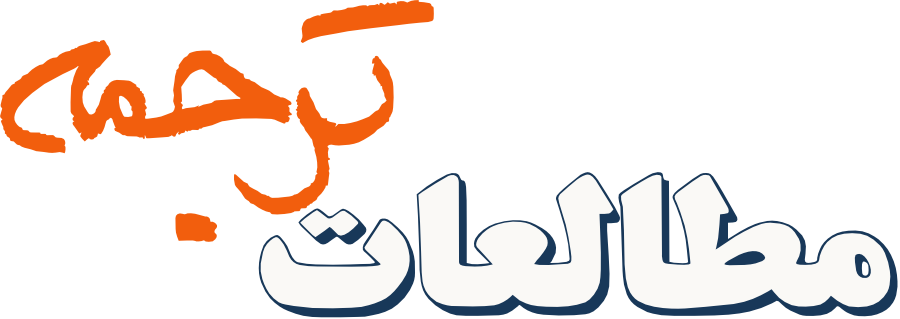ارزیابی دو درس کارشناسی مترجمی زبان انگلیسی؛ «نگارش فارسی» و «ساخت زبان فارسی»: تمرکز بر دیدگاههای دانشجویان ایرانی
چکیده
ارزیابی برنامه درسی اهمیت زیادی در بافتهای آموزشی دارد. ما در این مقاله قصد داریم دو درس کارشناسی مترجمی انگلیسی یعنی ساخت فارسی و نگارش فارسی را از دید دانشجویان ارزیابی نماییم و تصویری کلی از وضعیت کنونی آموزش این دو درس بدست آوریم. از دانشجویانی که حداقل یکی از این درسها را گذرانده یا در حال گذراندن بودند خواسته شد نظرسنجی-پرسشنامهای محققساخته را جواب دهند که متشکل از گویههایی در مقیاس لیکرت، تحت بخشهای اصلی آموزش دو درس، توانایی استادان، مطالب آموزشی، و کاربرد در ترجمه، و نیز مواردی تشریحی، با هدف کسب اطلاعات درباره آموزش این دو درس، را پاسخ دهند. نتایج نشان داد که آموزش این دو درس بسیار نظری و عمدتاً فارغ از نیازهای واقعی دانشجویان ترجمه است. پیشنهادهایی هم برای بهبود آموزش این دو درس مطرح شده است، مانند تغییر از کار نظری به عملی و نیز برقراری پیوندی محکمتر بین محتوای دروس و ترجمه. نتایج این تحقیق میتواند برای دانشجویان ترجمه، مدرسان و تهیهکنندگان مطالب درسی سودمند واقع شود.
کلمات راهنما:
نگارش فارسی, ساخت زبان فارسی, ارزیابی درس, محتوای دروس, نیازهای دانشجویان ترجمهمراجع
Afrashi, A. (2007). The structure of Persian language. Tehran, Iran: SAMT.
Bagheri, M. (1994). The history of Persian language. Tehran, Iran: Ghatreh Publication.
Bateni, M. R. (2019). Description of the grammatical structure of Persian language. Tehran, Iran: Amirkabir Publisher.
Beikian, A., Ketabi, S. & Hesabi, A. (2020). An evaluation of the effectiveness of the undergraduate program of English translation courses from the points of views of students and graduates. Linguistic Researches in Foreign Languages, 9(4), 1229-1265. doi:10.22059/jflr.2019.285701.657
Edström, K. (2008). Doing course evaluation as if learning matters most. Higher Education Research & Development, 27(2), 95-106. doi:10.1080/07294360701805234
Ellis, R., & Yuan, F. (2004). The effects of planning on fluency, complexity and accuracy in second language narrative writing. Studies in Second Language Acquisition, 26(1), 59-84. doi:10.1017/S0272263104261034
Fazel, A., Nejadansari, D., & Dabaghi, A. (2020). The effect of target-language metalinguistic awareness on the quality and textual features of translation from English to Persian: Persian Writing and The Structure of Persian Language in focus. Language and Translation Studies, 53(3), 95-126. https://doi.org/10.22067/lts.v53i3.84804
Gholamhossein-Zadeh, G. (2000). A guide to editing. Tehran, Iran: SAMT.
Göpferich, S. (2009). Towards a model of translation competence and its acquisition: The longitudinal study TransComp. In S. Göpferich, A. L. Jakobsen, & I. M. Mees (Eds.), Behind the mind: Methods, models and results in translation process research (pp. 12–37). Frederiksberg, Denmark: Samfundslitteratur
Hurtado Albir, A. (2015). The Acquisition of Translation Competence. Competences, Tasks, and Assessment in Translator Training. Meta, 60(2), 256–280. https://doi.org/10.7202/1032857a
Khoshsaligheh, M. (2014). Targeted competences in Persian and English translation Education. Language and Translation Studies, 47(3), 113-143.
Khoshsaligheh, M., Moghaddas, M. & Ameri, S. (2019). English translator training curriculum revisited: Iranian trainees’ perspectives. Teaching English Language, 13(2), 181-212.
Ministry of Science, Research, and Technology. (2017). The revised list of courses for the continuous B.A. program of English translation. Retrieved from https://hes.msrt.ir/uploads/T_Education/1524306471_1.pdf
Miremadi, S. A. (2003). A reflection on translation programs in universities and an approach to the solution of the problem. Translation Studies, 1(2), 53-64.
Mirza-Ebrahim Tehrani, F. (2003). The flaws of the education of translation in Iran. Translation Studies, 1(2), 89-94.
Mollanazar, H. (2003). The current status of the education of translation in Iran. Translation Studies, 1(2), 7-26.
Najafi, A. (1991). Let's don’t write wrongly (2nd ed.). Tehran: University Publication Center.
Newmark, P. (1988). Approaches to translation. New York, The US: Prentice Hall.
Oraki, A. & Tajvidi, G. R., (2020). Training Translators and Interpreters: The Need for a Competence-based Approach in Designing University Curricula. Iranian Journal of English for Academic Purposes, 9(2), 42-56.
PACTE (2000). Acquiring translation competence: Hypotheses and methodological problems of a research project. In A. Beeby, D. Ensinger & M. Presas (Eds.), Investigating translation (pp. 99-106). Amsterdam: John Benjamins.
PACTE (2011). Results of the validation of the PACTE translation competence model: Translation project and dynamic translation index. In S. O’Brien (Ed.). IATIS yearbook 2010 (pp. 30–56). London: Continuum.
Pym, A. (2003). Redefining translation competence in an electronic age. In defense of a minimalist approach, Meta, 48(4), 481-497.
Rahimy, R. (2003). Translation of journalistic texts: A study on the problems of Iranian students of translation. Translation Studies, 1(2), 29-43.
Rahimy, R. (2010). An evaluation of the effectiveness of the curricula for translation programs at the undergraduate and graduate levels in Iran: Problems and suggestions. Educational Planning, 19(3), 20-35.
Razmjou, L. (2001). Developing guidelines for a new curriculum for the English Translation B.A. program in Iranian Universities. Translation Journal, 6(2). Retrieved August 21, 2020, from https://translationjournal.net/journal/20edu1.htm
Salari, Z., & Khazaee Farid, A. (2015). The necessity of updating the Englsih Translation B.A. syllabus based on translation market in Iran. Language and Translation Studies, 48(1), 19-51. https://doi.org/10.22067/lts.v48i1.37518
Sami'i-Gilani, A. (2016). Writing and editing. Tehran, Iran: SAMT.
Schrijver, I. (2014). The translator as a text producer: The effects of writing training on transediting and translation performance. (Unpublished doctoral dissertation), University of Antwerp, Antwerp, Netherlands.
Servat, M. (2003). Persian writing. Tehran, Iran: Payame Noor.
Sohrabi, S., Rahimi, R., & Arjmandi, M. (2015). Efficacy of Iranian translation syllabus at B.A. level; deficiency: A new comprehensive model. Australian International Academic Centre. 6(1), 129-142. doi:10.7575/aiac.alls.v.6n.1p.129
Wu, D., Zhang, L. J., & Wei, L. (2019). Developing translator competence: Understanding trainers' beliefs and training practices. The Interpreter and Translator Trainer, 13(3), 233-254. doi:10.1080/1750399X.2019.1656406
Zolfaghari, H. (2015). Teaching editing and correct writing (3rd ed.). Tehran: Elm Publication.
Downloads
چاپشده
ارجاع به مقاله
شماره
نوع مقاله
DOR
مجوز
Copyright Licensee: Iranian Journal of Translation Studies. This article is an open access article distributed under the terms and conditions of the Creative Commons Attribution–NonCommercial 4.0 International (CC BY-NC 4.0 license).





